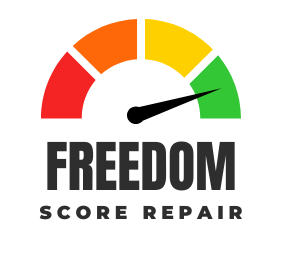
Having bad credit can feel like a heavy burden, affecting everything from your ability to secure loans to your financial peace of mind. In 2025, navigating credit repair is both more accessible and more strategic than ever before, thanks to evolving financial tools and updated credit scoring models. This guide will walk you through actionable, expert-backed steps to fix bad credit, understand its impact, and take control of your financial future.
Understanding Bad Credit
A bad credit score generally falls between 300 and 579 on the FICO scale. Individuals in this range often encounter higher interest rates, limited borrowing options, and in some cases, difficulty securing housing or employment. Factors contributing to bad credit can include missed payments, high credit utilization, collections, bankruptcy, and errors on your credit report.
Understanding the root causes of your bad credit is the first step toward improvement. A detailed review of your credit reports from the three major bureaus—Experian, Equifax, and TransUnion—can provide clarity on what is negatively affecting your score.
Step 1: Obtain and Review Your Credit Reports
You are entitled to a free credit report from each of the three major bureaus annually via AnnualCreditReport.com. Carefully reviewing these reports helps you identify:
- Late or missed payments
- Accounts in collections
- Inaccurate personal information
- Duplicate accounts or fraudulent activity
Meticulously checking for inaccuracies is crucial because errors can unnecessarily lower your score.
Step 2: Dispute Inaccuracies
If you find mistakes on your credit report, you can dispute them directly with the credit bureau. The process generally involves:
1. Identifying the incorrect item
2. Providing evidence to support your claim
3. Submitting the dispute online or via mail
Bureaus typically have 30 days to investigate and respond. Successfully removing inaccurate or outdated information can lead to a noticeable improvement in your credit score.
Step 3: Make Timely Payments
Payment history accounts for about 35% of your FICO score. Consistently paying bills on time is one of the most effective ways to improve your credit. Consider these tips:
- Set up automatic payments to avoid missing due dates
- Use reminders or budgeting apps to track payment schedules
- Prioritize payments on accounts that report to credit bureaus
Even a single missed payment can have a significant negative impact, so vigilance is key.
Step 4: Reduce Credit Card Balances
High credit utilization negatively affects your score. Utilization refers to the ratio of your credit card balances to your available credit. Aim to keep utilization under 30%, ideally below 10% for maximum benefit.
- Focus on paying down cards with the highest utilization first
- Avoid opening new credit accounts solely to increase available credit
- Use a debt repayment strategy such as the avalanche or snowball method
Step 5: Avoid Opening Multiple New Accounts
Every time you apply for new credit, a hard inquiry is generated, temporarily lowering your score. To protect your credit, limit new applications unless strategically necessary, such as consolidating debt or qualifying for lower interest rates.
Step 6: Become an Authorized User
Being added as an authorized user on a family member’s or friend’s credit account with a long and positive payment history can help boost your score. Ensure the primary account holder maintains good financial habits to avoid negative consequences.
Step 7: Consider Secured Credit Cards
For those with poor or limited credit, secured credit cards can be a valuable tool. These cards require a refundable deposit, which serves as your credit limit. By using the card responsibly and paying the balance on time, you can build a positive payment history that reflects favorably on your credit reports.
Step 8: Manage Debt Responsibly
Paying off debts strategically can improve your credit score over time:
- Focus on high-interest debt first to save money
- Maintain small balances on revolving accounts
- Negotiate settlements for old debts if possible
Responsibly managing your debt demonstrates to lenders that you are committed to improving your financial situation.
Step 9: Monitor Your Progress
Regularly monitoring your credit allows you to track improvements and catch potential issues early. Many online tools and credit monitoring services provide updates and alerts, helping you stay informed and proactive.
Step 10: Educate Yourself on Credit Management
Financial literacy plays a critical role in credit repair. Understanding how credit works, the impact of different financial behaviors, and strategies for long-term improvement ensures you make informed decisions and avoid repeating past mistakes.
Step 11: Seek Professional Guidance
Fixing bad credit can be complex, especially if there are multiple negative items or errors. Professional credit repair services can provide personalized strategies, negotiation assistance, and guidance to help you navigate the process efficiently.
How Freedom Score Repair Helps Customers?
Many individuals struggling with bad credit have found success with Freedom Score Repair. Their team of experts assists clients in reviewing credit reports, disputing inaccuracies, negotiating with creditors, and implementing personalized strategies to rebuild credit. Customers have successfully increased their scores, regained financial confidence, and qualified for better loans and interest rates. Freedom Score Repair combines professional expertise with a personalized approach, helping clients achieve lasting credit improvements.
Conclusion
Fixing bad credit in 2025 requires a strategic approach, patience, and consistent financial discipline. By understanding the factors affecting your score, disputing errors, making timely payments, reducing debt, and leveraging professional guidance, you can gradually rebuild your credit. Remember, improving your credit is a journey — every step you take toward responsible financial management brings you closer to achieving a stronger credit profile and greater financial freedom. Partnering with a trusted service like Freedom Score Repair can accelerate this journey, providing the support, expertise, and personalized strategies necessary for long-term success.



